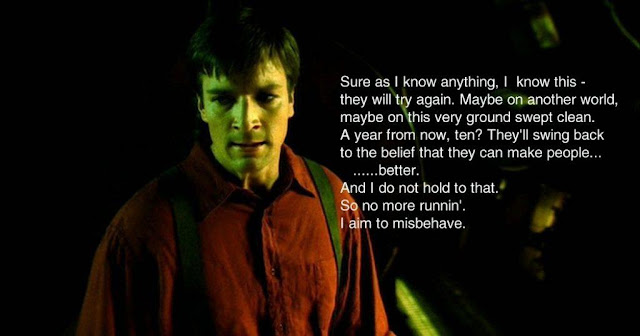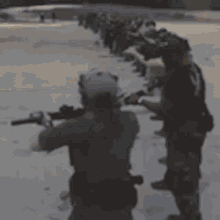Repost of TC3.....courses start next month...
Teamwork for tactical units - Medical stuff
Medical
As we are focusing on being a Gunfighter and not just a "trigger-puller", we must include medical skills in the definition. The military and specifically SOCOM, began to realize this reality after the TF Ranger operation in Mogadishu. This is what led to the TCCC/TC3 concept (Tactical Combat Casualty Care). This follows the logic of “every fighter a medic” insofar as lifesaving and stabilization skills are concerned. This was a huge step forward from the former CLS (Combat Lifesaver) protocols as this addressed the most common lethal injuries on the battlefield and provided for a committee that would regularly evaluate and implement the latest innovations and lessons learned.
To this day I still see organizations that go in harm’s way and only require CPR and sometimes basic first aid (Red Cross style)…..this is shameful to put it politely, especially considering that we have over a decade of combat operations experience to draw from. The importance of a robust and standardized lifesaving skillset among a tactical team cannot be overstated.
Even though I have had formal training as a Medic, the most useful skills I know, based on what I have actually employed in the real world, are found in the TC3 program. TC3 breaks down into three basic sections.
- Care under fire
- Tactical field care
- Tactical evacuation care
Instead of simply regurgitating the TC3 manual (which you can find online), I want to frame each section in a scenario based narrative.
Care under Fire…
You are part of a small unit on a security patrol in a lightly treed, mountainous area. Your team mate “Joe”, who is in front of you, turns to say something but instead of his voice you hear gunshots and Joe collapses. You dive towards a pile of nearby rocks as you fire several rounds into the grove of trees about 200 yards ahead where the shots seem to be coming from. From your covered position you do a quick 360 scan. You identify where all your teammates have taken cover and notice that most are directing fire into the same grove of trees, with a couple guys scanning the flanks and rear. As you line your sights up to acquire a target you notice Joe lying still on the ground at your 10 o’clock. You fire a few rounds as you yell at Joe to move to cover. Joe is moving very slightly and is clearly disoriented. You notice his leg is at a “wrong” angle and his uniform is growing dark with blood. You identify a large rock about 15 yards away at your 2 o’clock. You fire a few more rounds, perform a retention reload and dash to the new piece of cover. This puts you directly across from Joe and gives you a larger field of fire. You yell at Joe again but he is clearly unable to effectively move himself to cover. You yell at him to put a tourniquet on his injured leg. He slowly begins to fumble around his belt apparently searching for his tourniquet. At this point you decide that the team is effectively suppressing the enemy, as the rate of incoming fire has dropped substantially, and decide to bound to Joe’s position and drag him to a nearby ditch. As you reach him you grab Joe’s armor strap and drag him the eight or so feet to the safety of the ditch. You see that Joe’s shin has been destroyed by a bullet and he is bleeding bright red blood. You can’t find Joe’s tourniquet so you grab your spare and apply it high above the knee. Joe yells out in pain as you turn the windlass and secure the tourniquet in place. You reassure Joe as you move into a firing position and reengage the enemy. The patrol leader indicates that the QRF has been called and is inbound. At this point the enemy seems to have broken contact....
Okay. So what do we get from this scenario?
Care under fire is just that…..the minimum intervention that is necessary to keep someone alive while you eliminate the threat. Ideally, the injured party will be able to achieve a sufficient level of self-aid; for example – applying a tourniquet and moving to cover. This was not the case in our scenario, so our character had to make a quick judgment call. Another lesson we can glean from our story….Joe either did not have, or possibly lost his tourniquet. It is important for everyone to have a tourniquet readily available (easily accessible) and, ideally, everyone in the team wears their tourniquet(s) and their blow-out/IFAK kits in the same spot so you don’t have to search for it. I’ll tell you what….your buddy screaming and bleeding all over you coupled with incoming fire is not the time to be digging through a bag trying to find something that you desperately need. This is something that needs to be trained on regularly and this portion of TC3 can be easily inserted into your normal training activities.
…..Next time we will continue with Tactical field care and discuss Bail-Out Bags/Go-Bags/Bug-Out Bags and IFAKs.
.jpg)


I was disappointed they took I.V.'s out of the CLS protocol. Fluid replacement could be important if you do not have immediate medevac capabilities. It also was an area that kept most interested in the training. That being said, stopping the blood loss is the most important phase of treatment. An 18 Delta I met at Ft. Sam put it best to simplify things for the Joes: Treat 'em like a car, if there's a leak patch it, if he's leaking fluids, replace 'em, and if they're low on air, fill 'em up."
ReplyDelete